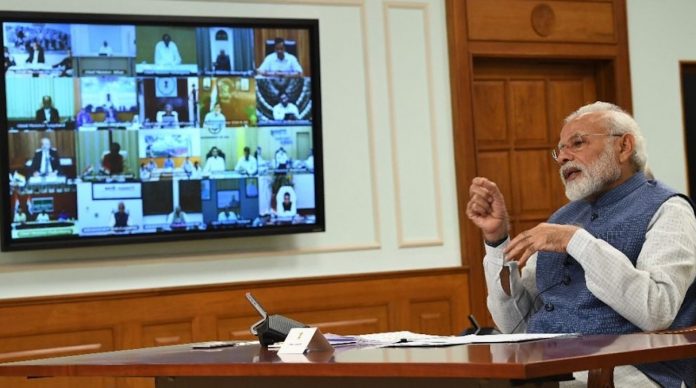It is when India invoked a colonial law Epidemic Diseases Act, 1897 to fight coronavirus, most people realised that it is still in the books. A 2020 pandemic in the Information Age does not require this colonial law, but warrants a new and robust public health law. Is India’s legislative and regulatory framework equipped to deal with such situations?
Indian states’ response to COVID-19
In Maharashtra and Kerala, which reported the highest number of COVID cases, the legislative and regulatory responses are worth noting. Maharashtra passed the Maharashtra COVID-19 Regulations, 2020 on 14 March to combat the coronavirus pandemic. The regulation directed all government and private hospitals to provide separate corners and screening processes for identifying cases. And medical officers and the district administration to work in coordination with the state integrated diseases surveillance programme offices. The regulation also stressed on information hygiene — no person/institution/organisation shall use any print/electronic or social media for dissemination of any information regarding COVID-19 without ascertaining the facts and prior clearance of the commissioner.
The Arvind Kejriwal government also issued the Delhi Epidemic Diseases, COVID-19 Regulations, 2020 on 12 March. This is in tune with the Maharashtra regulations. Most Indian states have tried to bridge the gap in law with these regulations.
But Kerala is the only state that has brought in an ordinance, which is a much more powerful tool.
Kerala notified the Epidemic Ordinance on 27 March. The ordinance aims at the unification and consolidation of laws relating to the regulation and prevention of epidemic diseases. This is a significant step towards the control of the spread of the novel coronavirus.
At the national level, The National Disaster Management Guidelines, 2008 tried to bridge the gap in health regulations by keeping the Ministry of Health and Family Welfare as the nodal ministry. But the guidelines are indicatory in nature for the executive.
The National Health Bill, 2009 was a landmark bill in the health sector. But unfortunately, it did not get converted into an act. The Bill was aimed at protection and fulfilment of rights in relation to health and wellbeing, health equity and justice. It proposed health care for all and the government’s proactive role in achieving that goal. On similar lines, the Public Health (Prevention, Control and Management of Epidemics, Bio-terrorism and Disasters) Bill 2017 was also a wake-up call, which tried addressing the issue. But unfortunately, the Bill lapsed.
Updating old policies
In this context, it is worthwhile to review the National Health Policy, 2017 to identify existing gaps. The Narendra Modi government had formulated the policy as a road map for bolstering public health measures. The analysis clearly showed the need for comprehensive public health law in India. Moreover, from the perspective of COVID-19 and epidemic diseases, the following issues are pertinent to revamp the National Health Policy, 2017:
— There is need for providing proper policy directions, including enactment and revision of the existing legal instruments, which is absent in the National Health Policy.
— There is no mention of the need for revising the Epidemic Act, which is 123 years old, for containing the incidence of contagious diseases. Revisiting the Epidemic Act has gained more relevance because of the coronavirus outbreak.
— There is a need for integrating relevant laws related to disaster management, food and nutrition security and environment in relation to health. In the context of disaster management, many health hazards arise due to natural disasters, which also need to be addressed.
— Health issues related to nutritional security need to be tackled.
— Health hazards related to water pollution, sound pollution and such other environmental issues need to be addressed.
— Under sanitation and hygiene, innovations like ‘social’ distancing, as in the case of the coronavirus outbreak, have to find a place in the National Health Policy. Implementation guidelines for ‘social’ distancing have to be evolved by health professionals.
Global response to Covid-19
An overview of the health regulations across the globe reveals that the European Union, Australia and the United Kingdom have specific legal frameworks to deal with public health issues.
Australia has an overarching law called the National Health Security Act 2007 and national agreements for prevention of health emergencies. Western Australia has adopted a participatory approach involving communities in decision-making. In the United States, under the Public Health and Service Act, the US Department of Health and Human Services has laid down specific guidelines to assist states during health emergencies and prevent the spread of communicable diseases. The EU Decision 1082/13 is the key legal instrument for threats to health, which endorses compliance with WHO’s International Health Regulations, 2005.
But a health crisis such as COVID-19 calls for sudden, flexible and drastic regulatory measures. For example in Spain, all private hospitals have been nationalised in the wake of the pandemic. The good practices adopted by South Korea and Malaysia in tackling the epidemic also need special mention. South Korea has adopted a robust mechanism of testing potential patients and utilising IT in the fight against coronavirus. These have contributed significantly to contain the epidemic. Malaysia has put in sufficient isolation centres in the country. The public health laws, besides a regulatory framework, should also incorporate the innovative mechanisms and good practices in the health sector.
Way forward
The coronavirus pandemic demonstrates the need for a separate public health law, which should be comprehensive and all-inclusive. India must revise the 2009 Bill and reintroduce it as a robust pubic health law.

